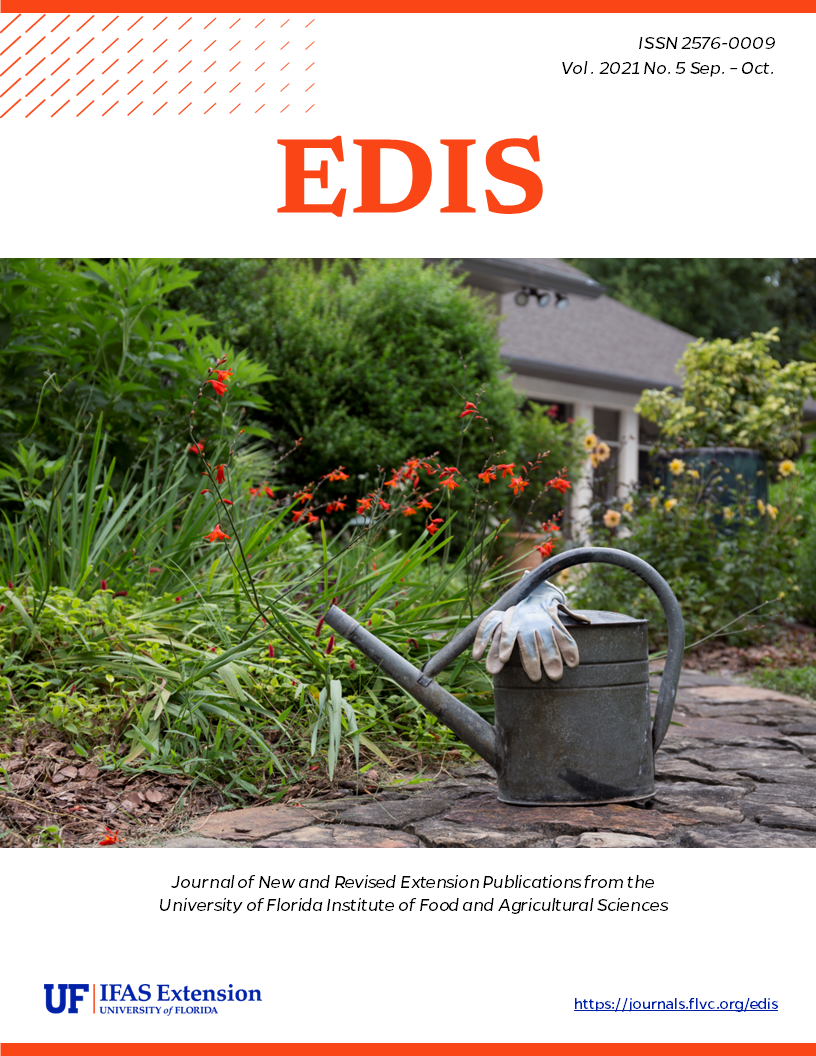Abstract
The Argentine ant, Linepithema humile (Mayr), is an insect native to South America, but an invasive species in many parts of the world. It is globally distributed. Linepithema humile is considered a pest species, primarily due to its feeding habits of tending and protecting honeydew producing insects, such as scale insects, which are often damaging to crops and ornamental plants. This aggressive, populous ant species also has a negative effect on native ant species. Linepithema humile colonies have multiple queens, allowing colonies to grow and spread rapidly. Under certain conditions, the argentine ant may also become a household pest if it finds a way into homes. Linepithema humile has been designated as a tramp ant species, meaning that it has an incredible ability to spread and establish in new areas and is difficult to control. Linepithema humile, like other tramp species, can establish in new locations quickly due to the multi-queen nature of the colonies, their abitlity to forage and find resources, and the extensive network of interrelated colonies they are able to form. This document provides an in-depth synopsis of the insect's life history, biology, and management.
References
Abril, S, Oliveras, J, & Gómez, C. 2010. Effect of temperature on the development and survival of the argentine ant, linepithema humile. Journal of Insect Science, 10(97), 1–13. https://doi.org/10.1673/031.010.9701
Brightwell, RJ, & Silverman, J. 2010. Invasive Argentine ants reduce fitness of red maple via a mutualism with an endemic coccid. Biological Invasions, 12(7), 2051–2057. https://doi.org/10.1007/s10530-009-9607-0
Daane, KM, Sime, KR, Fallon, J, & Cooper, ML. 2007. Impacts of Argentine ants on mealybugs and their natural enemies in California’s coastal vineyards. Ecological Entomology, 32(6), 583–596. https://doi.org/10.1111/j.1365-2311.2007.00910.x
Deyrup, M, Davis, L, & Cover, S. 2000. Exotic ants in Florida. In Transactions of the American Entomological Society (Vol. 126, Issues 3–4, pp. 293–326).
Gordon, DM, Moses, L, Falkovitz-Halpern, M, & Wong, EH. 2001. Effect of weather on infestation of buildings by the invasive Argentine ant, Linepithema humile (Hymenoptera: Formicidae). American Midland Naturalist, 146(2), 321–328. https://doi.org/10.1674/0003-0031(2001)146[0321:EOWOIO]2.0.CO;2
Helanterä, H, Strassmann, JE, Carrillo, J, & Queller, DC. 2009. Unicolonial ants: where do they come from, what are they and where are they going? Trends in Ecology and Evolution, 24(6), 341–349. https://doi.org/10.1016/j.tree.2009.01.013
Heller, NE, & Gordon, DM. 2006. Seasonal spatial dynamics and causes of nest movement in colonies of the invasive Argentine ant (Linepithema humile). Ecological Entomology, 31(5), 499–510. https://doi.org/10.1111/j.1365-2311.2006.00806.x
Keller, L, & Passera, L. 1993. Incest avoidance, fluctuating asymmetry, and the consequences of inbreeding in Iridomyrmex humilis, an ant with multiple queen colonies. Behavioral Ecology and Sociobiology, 33(3), 191–199. https://doi.org/10.1007/BF00216600
Kistner, E J, Melhem, N, Carpenter, E, Castillo, M, & Hoddle, MS. 2016. Abiotic and biotic mortality factors affecting Asian citrus psyllid (hemiptera: Liviidae) demographics in Southern California. Annals of the Entomological Society of America, 109(6), 860–871. https://doi.org/10.1093/aesa/saw053
Klotz, JH, Rust, MK, Field, HC, Greenberg, L, & Kupfer, K. 2008. Controlling argentine ants in residential settings (Hymenoptera: Formicidae). Sociobiology, 51(3), 579–588.
Layton, B, & MacGown, JA. 2006. Control of argentine ants and odorous house ants in the home. http://mississippientomologicalmuseum.org.msstate.edu/Researchtaxapages/Formicidaepages/ant.publications/odorous.Argentine1.pdf
LeBrun, EG, Tillberg, CV, Suarez, AV, Folgarait, PJ., Smith, CR, & Holway, DA. 2007. An experimental study of competition between fire ants and Argentine ants in their native range. Ecology, 88(1), 63–75. https://doi.org/10.1890/0012-9658(2007)88[63:AESOCB]2.0.CO;2
Loiácono, MS, Margaría, CB, & Aquino, DA. 2013. Diapriinae wasps (Hymenoptera: Diaprioidea: Diapriidae) associated with ants (Hymenoptera: Formicidae) in Argentina. Psyche (London), 2013. https://doi.org/10.1155/2013/320590
MacGown, Joe A, Whitehouse, RJ. 2016. Linepithema humile (Mayr) (the Argentine Ant). Mississippi State University, Ants (Formicidae) of the Southeastern United States. https://mississippientomologicalmuseum.org.msstate.edu/Researchtaxapages/Formicidaepages/genericpages/Line.humile.htm
McGlynn, TP. 1999. The worldwide transfer of ants: Geographical distribution and ecological invasions. Journal of Biogeography, 26(3), 535–548. https://doi.org/10.1046/j.1365-2699.1999.00310.x
Orr, MR, & Seike, SH. 1998. Parasitoids deter foraging by Argentine ants (Linepithema humile) in their native habitat in Brazil. Oecologia, 117(3), 420–425. https://doi.org/10.1007/s004420050676
Way, MJ, Paiva, MR, & Cammell, ME. 1999. Natural biological control of the pine processionary moth Thaumetopoea pityocampa (Den. & Schiff.) by the Argentine ant Linepithema humile (Mayr) in Portugal. Agricultural and Forest Entomology, 1(1), 27–31. https://doi.org/10.1046/j.1461-9563.1999.00005.x
Westermann, FL, Bell, VA, Suckling, DM, & Lester, PJ. 2016. Synthetic pheromones as a management technique - dispensers reduce Linepithema humile activity in a commercial vineyard. Pest Management Science, 72(4), 719–724. https://doi.org/10.1002/ps.4043
Wetterer, J K, Espadaler, X, Wetterer, AL, Aguin-Pombo, D, & Franquinho-Aguiar, AM. 2006. Long-term impact of exotic ants on the native ants of Madeira. Ecological Entomology, 31(4), 358–368. https://doi.org/10.1111/j.1365-2311.2006.00790.x
Wild, AL. 2004. Taxonomy and distribution of the Argentine ant, Linepithema humile (Hymenoptera: Formicidae). Annals of the Entomological Society of America, 97(6), 1204–1215. https://doi.org/10.1603/0013-8746(2004)097[1204:TADOTA]2.0.CO;2

